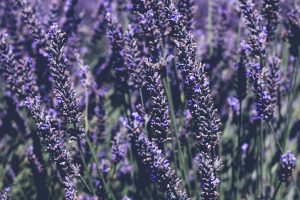One of the most beautiful ways (if you ask us!) to define a border or edge a pathway is with a gorgeous lavender hedge. Not only does lavender form a wonderfully bushy plant that creates a thick full hedge, but you also get the added benefit of a gorgeous swathe of colour in summer and that amazing lavender fragrance. And the bees and butterflies will love it too!
So what are our top tips for creating and maintaining a gorgeous lavender hedge?
Step 1
Firstly make sure that you buy small, healthy lavender plants from a reputable nursery (or buy them directly from us!) and ensure that they are all of the same species. This will make sure that all of your plants grow at the same rate and flower at the same time.
Step 2
Prepare your soil. Lavender thrives in poor or moderately fertile, free-draining soil in full sun, and is ideal for chalky or alkaline soils. If your soil is heavy, such as clay or clay-loam, then you can improve the soil’s drainage by digging in organic matter and gravel a couple of months before your plant your hedge. Then dig the ground over again immediately before planting and it can also often help to build a ridge onto which you can plant your lavender.
Step 3
Lavender is best planted in spring, between April and May. Space plants between 30cm and 45cm apart and ensure that they are planted to the same level that they were in their pots. Gently firm the plants into the ground with your fingers, being careful not to damage any of the stems or leaves.
Step 4
Water your plants in well. Although lavender originates from Mediterranean regions and can be very drought-resistant, it will need regular watering throughout its first growing season, until it is fully established (although it is worth noting that over-watering can be worse for your lavender hedge than under-watering). In subsequent years applying an all-purpose liquid fertiliser to your hedge in spring can also be beneficial.
Step 5
Prune your lavender. A new lavender hedge will require very little pruning in the first year (other than removing the dead flower spikes), to allow it to put on some growth. In subsequent years and on established plants use secateurs to remove flower stalks and about 2.5cm (1in) of the current year’s growth, making sure that some green growth remains. As lavender does not break readily from old wood, we generally recommend that neglected specimens are best replaced. Remember to cut your lavender back to the same level as the other plants to form a cohesive hedge.
Step 6
Enjoy your hedge! Given a couple of years you will have a hedge that can reach up 60-80cm tall and provide you with an abundance of colour and fragrance.
Read related articles:





